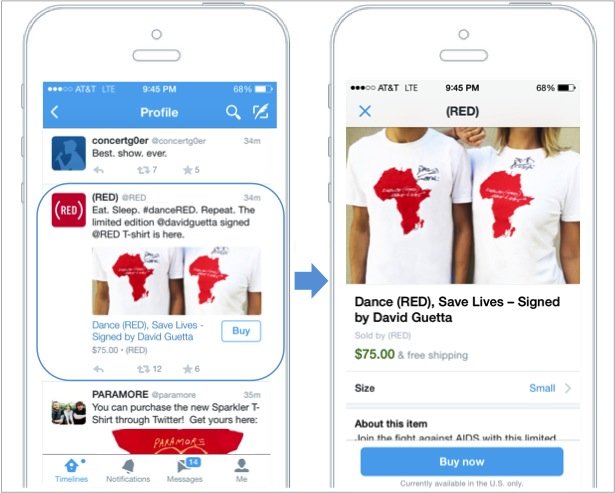
The Rise of Social Commerce
Social commerce has come about due to the theoretical compatibility of two well-loved and extremely popular offline and online experiences.
Shopping and social media.
Going shopping with your mates (depending on the time of year and where you are) is generally a pleasant and exciting experience. One which you leave feeling particularly pleased with yourself and your new things while trying not to think about the dent in your bank account.
Nonetheless, spending time with your mates and having them around to voice their opinion on some crucial social-altering style choices is a fun day out.
E-commerce on the other hand, is a completely different experience. It is easy and convenient, with no crowds, and if you splash out sometimes you even receive free next day delivery. But it’s nowhere near as social since it usually consists of being sat at your desk, or on your sofa alone with a cuppa.

So with the significant rise of smartphone and social media usage, savvy marketeers have found a way to take the best parts of an e-commerce online shopping experience and combine it with social, leading to the birth of social commerce.
Shoppers are using social media for inspiration, as a way of learning about a brand and their products prior to visiting a website or a shop, and so naturally, an opportunity arose to capitalise on this trend.
Enabling shoppers to purchase directly from a social network without having to troll through multiple links and web pages will make online shopping easier, simpler, quicker and more efficient. Right?
52% marketers certainly thought so when they predicted social commerce as the most rapidly growing trend in 2016.
But, does it work?
Well, this is where it gets a bit sticky.
Social commerce is a huge buzzword of the moment in the digital marketing world, but to our customers, no one’s really sure what it is.
In general, there’s no ‘front door’ entrance to this new marketplace. The user journey feels disjointed and uncertain making for an uneasy customer experience – something that is not good for customer or seller.
For instance, I don’t know if you’ve tried out Facebook’s Shop section but it’s all very confusing. For starters, they cannot decide whether their social commerce function is called ‘Marketplace’, ‘Shopping’ or the most recent update of ‘Shops’.

It is complicated having ‘Marketplace’ and ‘Shop’ which are separate features with the same basic function.
Marketplace is where Facebook users can sell, and Shop is for brands to sell their products from their Facebook page.
The design and functionality of Shop is also confusing, once you find a product of interest, you are still redirected to the brand’s website where you’re prompted to download their app prior to browsing anyway.
Just this Facebook shopping experience lends itself to the claim that social commerce is less trustworthy than e-commerce sites, such as Ebay and Amazon. These big e-commerce sites have perfected a seamless purchase experience, even down to order tracking, product reviews, brand rankings and returns policy.
These measures aren’t even in place for social commerce yet.
In fact, while social and shopping may have appeared to be a match made in heaven, now might not be the right time for social commerce if customers are already satisfied with their e-commerce experiences. So why rock the boat?
The truth is simple: more people are turning to social media for product recommendations and reviews than to purchase.
According to MarketingWeek, 56% of consumers who follow brands on social do so to view products, whereas 35% are looking to get ideas about what to buy the next time they’re heading to the shops.
With a low customer interest, retailers have experienced this truth firsthand in the extremely limited return from social commerce.
In December 2016, Business Insider stated that 72% of global merchants report no sales from buy buttons in 2016 and over 40% plan to reduce usage of buy buttons in 2017 simply because shoppers are not interested.
Twitter has stepped out of the social commerce limelight by halting the development of their buy-now function, instead focusing on providing brands with the tools to deliver great customer service (something that might be needed after a social commerce experience on Facebook).

Are there any success stories?
Regardless of everything I have just mentioned about Facebook’s Shop section, Facebook continues to dominate as a source of social traffic and sales. Nearly two-thirds of all social media visits to Shopify stores come from Facebook.
Plus, Facebook has the highest conversion rate for all social media e-commerce traffic at 1.85%. Instagram is not far behind either as it generates higher order values than the other competitors.
Instagram’s social commerce function is simple and most importantly it is not intrusive. Along with the platforms video ads, photo ads, and carousel ads users have a variety of choice to attract and convert their Instagram followers to customers. Instagram could be onto a winner.
Getting started with shopping on Instagram [voiceover tutorial] from Instagram for Business on Vimeo.
As a brand, a well-planned and executed social commerce strategy has huge potential benefits, Heidi Cohen highlights just a few:
- The ability to make smarter inventory choices by evaluating customer reviews and by asking customers to vote on future products they would like to purchase
- Being able to monitor customer-to-customer conversations about products, pre and post-purchase
- Increase your social community through conversations taking place about your products
- The ability to reach new customers you might not have otherwise been able to
- Personalise the customer experience based on known preferences from social profiles
- Encourage customer recommendations and reviews
Boohoo are one of the first and few retail brands to crack social commerce by successfully relating and resonating with their target demographic who are young fashion lovers. With social commerce neatly embedded into their strategy, they have seen a 97% increase in profits in the past year.

So, there is certainly an opportunity to capitalise on social commerce, but only if the formula works for your brand and target audience.
Do I need to invest?

There is so much conflicting evidence about social commerce, where it’s going to go next and what to do about it.
It all comes down to that fact that social commerce is still so new, it is in its infancy and is more an experiment rather than a tried and tested formula which you can guarantee a worthy ROI on.
What can’t be denied is the potential of social commerce because done well it will extend your reach and help you to find new audiences.
Once it has been further developed across multiple social networks, social commerce will reduce friction by keeping the browsing and conversion stages all together in one place, creating an easy customer experience for both brand and user.
But, as it is still an experiment there isn’t a rush.
If your customers are happy with their current e-commerce experience then there is no need to invest time or budget just yet.
Keeping tabs on trends and developments, such as user generated content, reviews, times and frequencies, and the integration between social profiles and e-commerce site, will help you to scope out whether it is a priority for your KPI’s and target demographic at a later stage.
